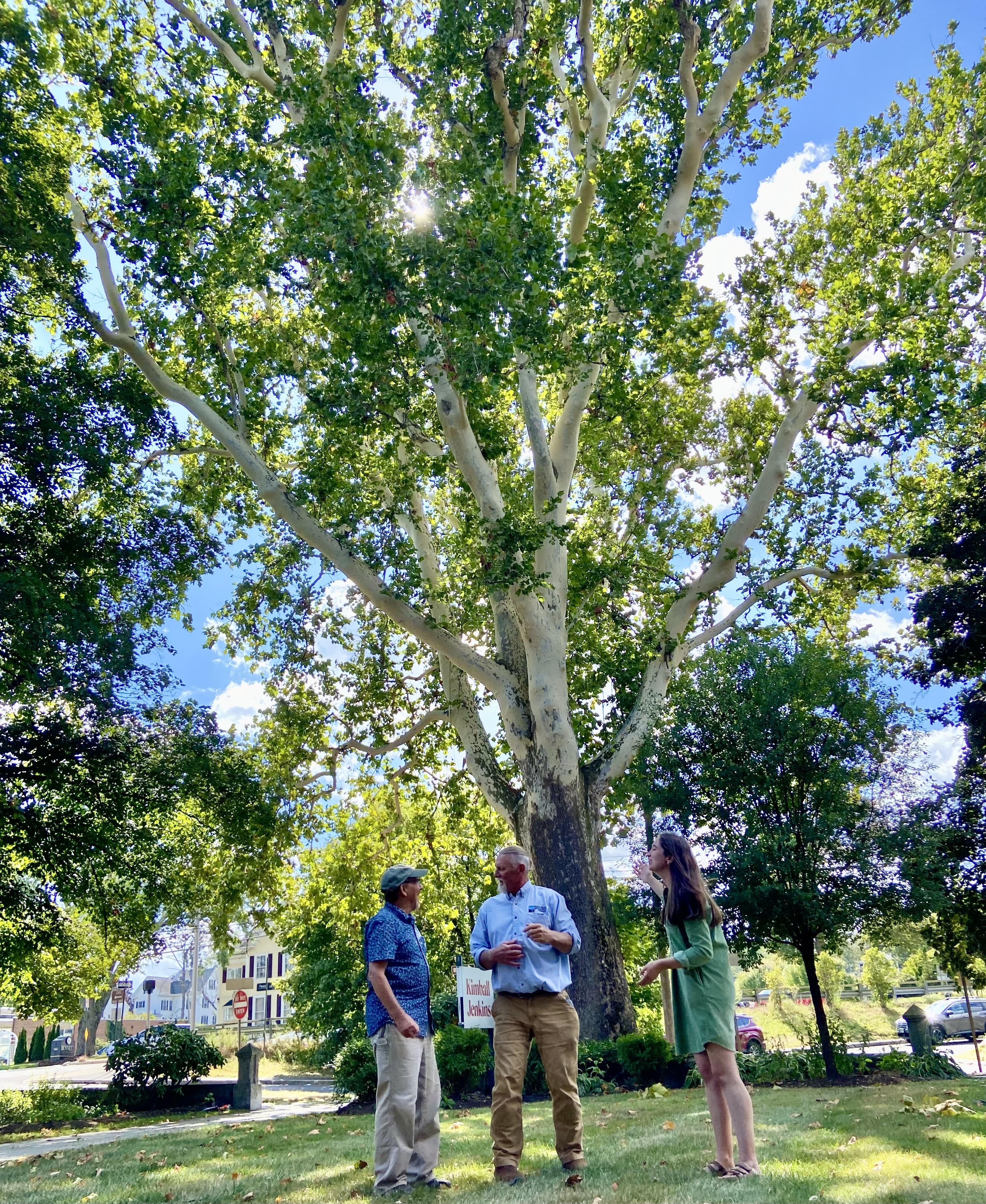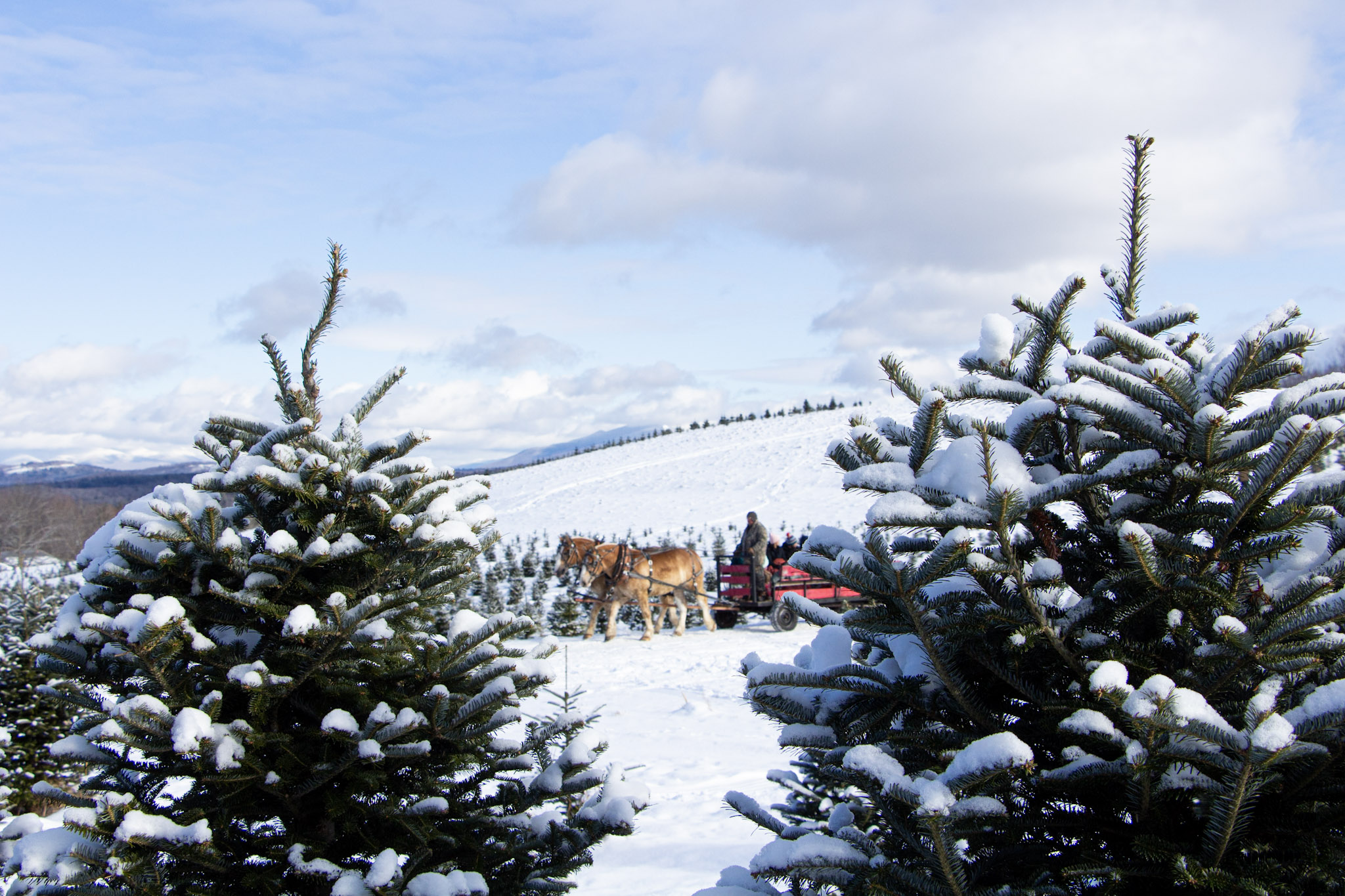- Tags:
- Education,
- Something Wild,
- Land Conservation

The Something Wild team, Dave Anderson of the Forest Society, and Chris Martin and Grace McCulloch of NH Audubon, brought a measuring tape to visit NH’s largest sycamore tree, located at the historic Kimball-Jenkins Estate near Horseshoe Pond in Concord’s north end.
The City of Concord tree department, who cares for this giant, says it’s well over 100 feet tall. The Something Wild team measured its crown spread – from one side to the other – at a very approximate 110 feet.
Fortunately, the facilities manager of the Kimball-Jenkins Estate, Ko Dustin, was available to join hands to circle the massive trunk, which turned out to be approximately 18 feet (or 4 people) in circumference.
Sycamores are known for their typically large size and multi-century lifespans. This urban tree is believed to be over 300 years old, meaning that it was already growing here when the town of Rumford, Concord’s predecessor, was established back in the early 1700s.
Sycamores have a rich fossil history that goes back to the late Cretaceous Period, about 100 million years ago. That makes them tens of millions of years older than our more common maples and oaks.
Sycamores don’t form forests like pines and oaks do, and they’re pretty uncommon across the Granite State’s landscape. New Hampshire is at the very northern edge of their range, but they do occur in wet soils along our major rivers.
You’ll find them along the Merrimack River floodplain, and along the Connecticut River as far north as Lebanon. They’re a fast-growing, light-dependent, pioneer species with a strong. spreading root system that’s just as expansive as its canopy.
Sycamores thrive in eroded or over-washed areas where moist sandy bottomland soil is exposed. But this tree can’t stand to be constantly flooded and it will die if inundated for long intervals.
This species is known for its distinctive platey, peeling, mottled bark. With patches of white, gray, green, and brown, it not only looks like camouflage, but it might be the actual inspiration for the camo design in the first place!
Sycamore bark doesn’t expand as fast as the tree grows, so outer layers flake off in irregular patches. The white color you see on the tree’s upper trunk and branches is the newly-exposed inner layer. This light color may help to reflect sunlight and allow the tree to stay cool in warmer southern climates.
Sycamore heartwood is prone to injury and decay. Wind storms and ice accumulation can break off branches.
In trees, the vital living tissue is concentrated in the trunk’s outer layers, and trees reinforce this strong outer shell with continuous outward growth. If the center heartwood starts to decay, the tree compartmentalizes the wound, walling it off from the tree’s living tissue.
So the giant trees are often hollow, which doesn’t necessarily mean the tree is dying, it’s just concentrating its strength on the outside. The distinctive hollows that result provide nesting and denning spaces for a variety of birds and mammals.
Hollow trunks can be den sites for black bears and nest sites for barred owls. For example, before chimneys dotted the landscape, chimney swifts used to roost inside hollow trees.
Chimney swifts are fast-flying insectivorous birds that spend most of their active time in the air. They don’t perch on branches and wires like most other birds, instead they cling to vertical surfaces to rest and nest, which made those hollow sycamores the perfect spot for a giant roost.
Back in the early 1800s, naturalist John James Audubon actually described thousands of swifts bursting out of one hollow sycamore at dawn. He estimated nearly 9,000 birds packed into a single tree.
And sycamores produce pendant seed balls consisting of thousands of lightweight wind-blown seeds that provide food for purple finches, juncos, and squirrels.
And it’s extensive root system and the diameter of its mature trunk both help keep it standing strong against the wind.
As fall approaches, the sycamore’s huge bright green and broadly-toothed leaves turn to yellow-gold, and then brown. The color show will only last a few weeks, but with the contrasting patterned bark, it’s a special sight worth seeking out along southern NH rivers.
Something Wild is a partnership between NH Audubon, the Forest Society, and NHPR.
